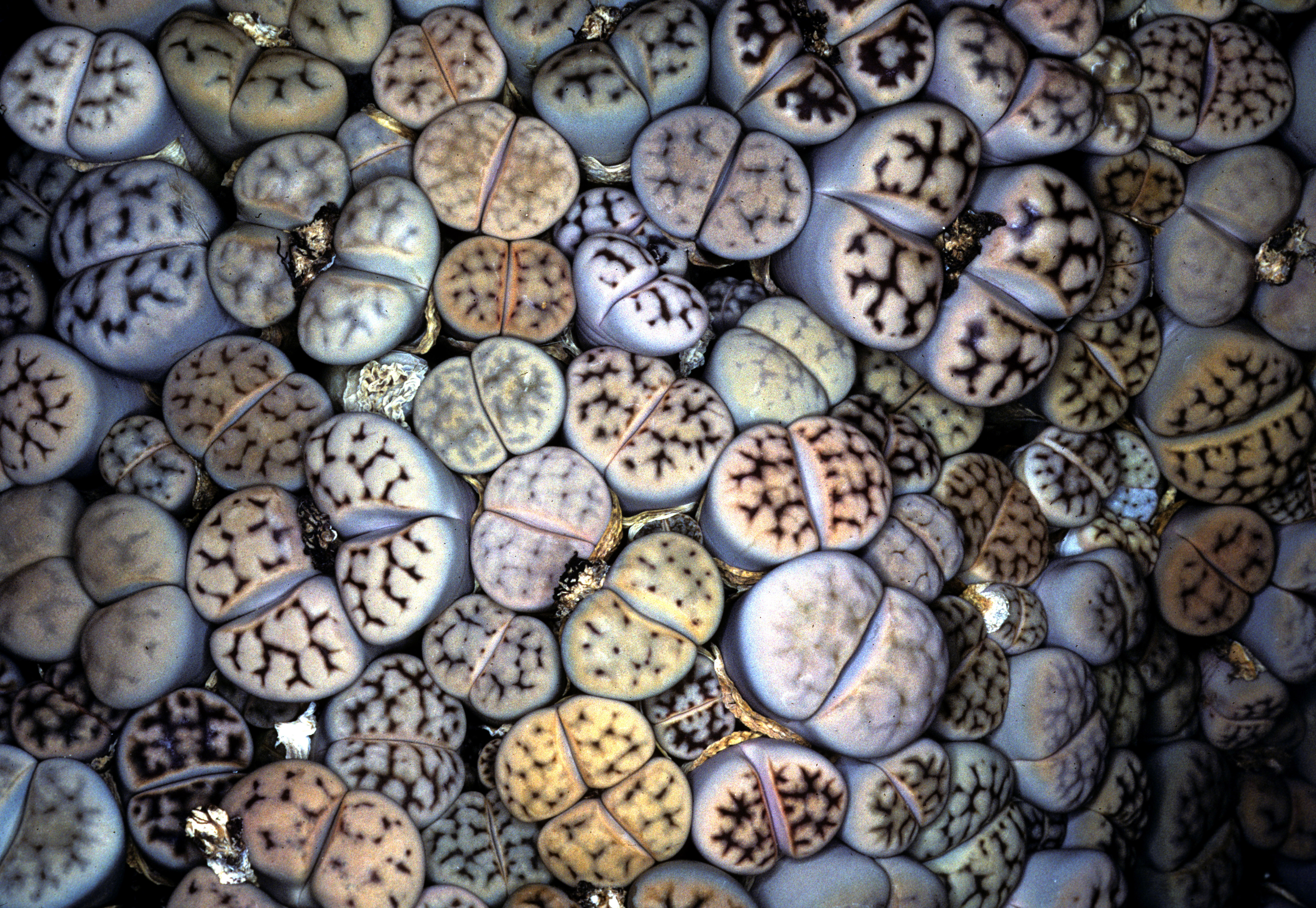Many species of
plants and animals have evolved striking visual resemblances to inanimate
objects found in the same locality. Examples can be found in a diverse array of
taxa (Skelhorn, Rowland, and Ruxton, 2010). For example, plants from the genus Lithops,
also called living stone, flowering stone, or stoneface, are named so because they visually resemble
stones. These flowering stones can be any of a group of about 40 species of
succulent plants of the carpetweed family and are native to southern Africa.
The plants are virtually stemless, with two leaves growing during each rainy
season forming a fleshy, roundish structure that is slit across the top (Encyclopaedia Britannica, 2015).
 |
| Structure of Lithops plant from "The Morphology of Lithops" |
The succulent
leaves are hypothesized to have three evolutionary purposes. First, because the
leaves are sunken into the ground and lack the ability for stomatal
transpiration, they are thought to serve as protection against evaporation
(Eller and Ruess, 1982). The succulent leaves also effectively serve as a light
transmitter to photosynthetic tissue below ground (Bennett et al., 1988). These
adaptations have allowed the Lithops plants to thrive in very dry, arid environments
and radiated and found small niches throughout southern Africa, promoting rapid
speciation (Kellner et al., 2011). Lastly, but certainly not the least of all
evolutionary adaptions, is the remarkable specialisation of vascular tissues to
mimic local soil types. This adaptation has been found to create a camouflage
for protection against herbivory (Kellner et al., 2011). It is quite amazing
that Lithops can be found on every soil formation, ranging from granite to
sandstone or limestone.
 |
| Collection of Lithops courtesy of Index of Aizoaceae |
Little is known
about the genetic relationships within the Lithops genus at present. As of now,
its taxonomy is completely based on morphology. Kellner and his colleagues
created one of the first phylogenetic trees in 2011, showing that the many
species within Lithops are possibly a result of parapatric and allopatric speciation.
More research is needed in order to determine the evolutionary relationships
between the species in the Lithops genus, but it is clear that because of the
large morphological variability due to geographic distribution, morphological
trees are inaccurate.
References
Bennett, B.,
Brito, C., Calvert, B., Cooper, J., Dennis, N., Holman, W., Patmore, J., and
Stiver, J., 1988, British Cactus & Succulent Journal, 6 (2), pp.
44-45. Retrieved 07, April, 2015, from http://www.jstor.org/stable/42794129
Eller, B. M.,
and Ruess, B., 1982, Physiologia Plantarum, 55, pp. 329-334. Retrieved 07,
April, 2015, from http://onlinelibrary.wiley.com/doi/10.1111/
Encyclopaedia Britannica, 2015, Encyclopaedia Britannica Online, lithops. Retrieved 07, April, 2105, from http://www.britannica.com/EBchecked/topic/343776/lithops
Encyclopaedia Britannica, 2015, Encyclopaedia Britannica Online, lithops. Retrieved 07, April, 2105, from http://www.britannica.com/EBchecked/topic/343776/lithops
Kellner, A., Ritz, C. M., Schlittenhardt, P.,
and Hellwig, F. H., 1982, Plant Biology, 13, pp. 368-380. Retrieved 07,
April, 2015, from http://onlinelibrary.wiley.com/doi/10.1111/
Skelhorn, J., Rowland,
H. M., and Ruxton, G. D., 2010, Biological Journal of the Linnean Society,
99, pp. 1-8. Retrieved 07, April, 2015, from http://onlinelibrary.wiley.com/doi/10.1111/
Photos
Structure of
Lithops retrieved 07, April, 2015 from
http://www.floweringstones.co.za/morphology/morphology.html
Collection of
Lithops retrieved 07, April, 2015 from
http://www.flowershots.net/web-content/Aizoaceae/lithops2_.jpg
You mention three evolutionary purposes, but only actually write down two? Is the third one related to reduction in predation? I can understand why the plants would have sunken leaves to minimise evaporation and to promote photosynthesis but this doesn’t explain why they have evolved to look like stones. They could still be green and sunken.
ReplyDelete